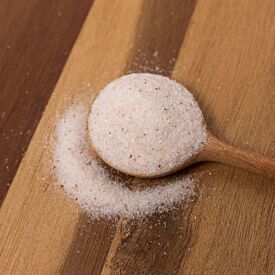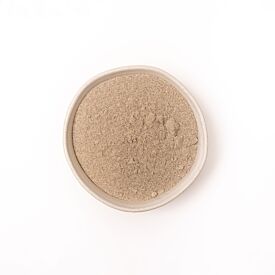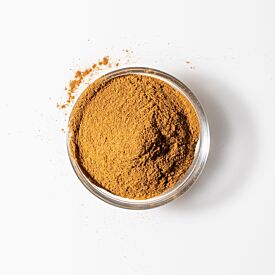Vata-Balancing Energy Bars Recipe
As a pitta-predominant person, I am more challenged during the summer season when the days are longer and the weather is hotter and more intense. Personally, I love the transition to the fall with cooler weather, more vibrant colors in nature, shorter days, and the excitement of the upcoming holiday season with family and friends.
I was first introduced to Ayurveda during my yoga teacher training program, and as a Cordon Bleu chef I was amazed by the six-taste theory and how their corresponding energetics found in nature can affect overall health. This was the beginning of my path to understanding life in a different way, which has brought holistic balance and harmony to my body, mind, and spirit.
Ayurveda has been practiced for thousands of years, and is a unique system of medicine because it looks to the root cause of disharmony and disease, and then uses the body’s inherent nature and energies to bring balance and well-being—physically, mentally, emotionally, and spiritually.
At its foundation Ayurveda is based in the five elements found in the universe (ether, air, fire, water, and earth), and is further understood by ten opposite qualities found in nature (hot-cold, wet-dry, heavy-light, gross-subtle, dense-flowing, mobile-stable, dull-sharp, soft-hard, smooth-rough, cloudy-clear) which define the elements and establish the three doshas (biological energies) in the body: vata (air/ether), pitta (fire/water), and kapha (water/earth).
The unique balance of these three doshas is our constitution, or prakriti, which is established at conception and is the basis of our physical, mental, emotional, and spiritual existence and well-being. Imbalances are understood by our current state of health, or vikriti, which is affected by many factors including the change of seasons, our physical location in the world, what we ingest, and psychological disharmony.
The Role of Vata
The vata dosha is made up of the ether (cold, dry, light, and immobile), and air (cool, dry, light, and unstable) elements. Its location in the body is the colon, bones and joints, ears, brain, and nerve tissues and governs all biological activities related to movements such as breathing, talking, nerve impulses, circulation, food assimilation, and elimination.
Psychologically, vata governs communication, creativity, and quickness of thought.
Vata and fall to early winter season (October–January) share the same qualities found in nature, being cold, dry, light, rough, and mobile. Understanding the Ayurvedic principle that like increase like, a natural increase of these qualities around us with the change of season can elevate the vata dosha within us and create unbalance and disharmony.
Initially, imbalances during this time of year can include cooler body temperatures, increased dryness of the skin and hair, and possible gas, bloating, and constipation. Additionally, during this active fall and holiday season, the vata dosha can experience increased anxiousness, mental and/or emotional instability, and even stress with family and business engagements, increased traveling, and irregular food intake.
Balancing Vata
During the cooler, drier, lighter, and mobile fall season, introduce opposite qualities that bring balance and harmony. Include warmth of environment, clothing, and colors. Stay well hydrated, which will assist with dryness and possible irregularity, and moisturize the body by practicing self-massage with oil, or abhyanga. Create stability with a grounding yoga, pranayama, and meditation practice, and eat warming foods, spices, and herbs that are moist, heavy, and stable in nature.
Meeting with an Ayurvedic practitioner regularly, and especially before the change of seasons, will help you to reconnect and establish which practices and therapies would most benefit your constitution and individual health concerns in the coming months.
Below is a yummy fall energy bar recipe which has the qualities of being warm, wet, heavy, and stable—perfect for vata. It is vegan, dairy free, and gluten free as well. Remember to always use organic ingredients when possible. Enjoy.
Vata Energy Bars
![]()
Ingredients:
- 2 cups raw cashews
- 2 cups pitted dates, preferably Medjool
- 1 cup almond butter
- ½ cup coconut oil
- 1 cup Jaggery (unrefined date, palm, or cane sugar), or replace with brown sugar
- ½ cup shredded unsweetened coconut
- 1 teaspoon pure vanilla extract
- ¾ cup coconut flour
- 2 teaspoons ground cardamom
- 2 teaspoons ground cinnamon
- 1 teaspoon of mineral salt
Directions:
Line a baking pan with parchment paper, set aside. Pit the dates, set aside.
In a food processor grind the cashews to a coarse meal, and then add the dates and pulse until combined. Next, add the jaggery and coconut flour, and combine.
In a separate bowl mix the almond butter, coconut oil, vanilla, shredded coconut, cardamom, cinnamon, and salt, and then add to the above mixture.
Mix/pulse in food processor until combined, and then press the mixture into a lined 8 x 8 inch baking pan, and if sticky, wet the hands with water and smooth the top.
Refrigerate for one hour, remove from pan, and cut into bite-sized pieces.












